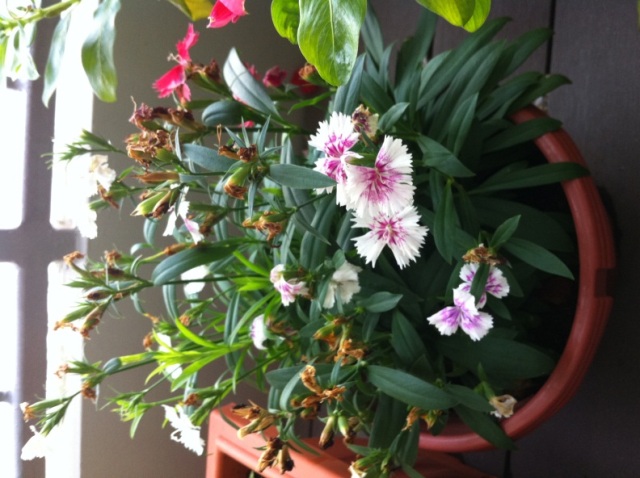Question
 Plant unknown
Plant unknown
Hi Darlene,
Recently I have purchased some plants and do not know what are the care needed especially on watering frequency or amount of sunlight exposure etc. I do not know the name as well and find it hard to locate the info on the net. Please advise.
For your information, I water it once a day every nite till the water came out from the bottom. I am using city water.
In total, I have four plants with name unknown, wonder how am I suppose to send it at one go. In here I only can attach one picture thats all. If possible, wonder if I can send the rest to you by email?
Thanks.
Regards,
Alfred
AnswerAlfred,
No plant likes to be kept constantly wet. You will rot the roots. You should always empty the drain tray under the plant an hour after water so the plant is not sitting in water, that rots the roots really fast. Plants need to dry out between watterings so their roots have a chance to breathe. They are not swamp plants! The plants in the pot that you sent in the picture are pinks and dianthus. They are considered outdoor plants.
Most dianthus have pink, red, or white flowers with notched petals. Sweet Williams are biennial or short-lived perennials covered with bicolor flowers in late spring. Pinks are low-growing dianthus suitable for rock gardens. Carnations are taller and good for bouquets but tend to be less hardy than other dianthus.
Select a site with full sun and well-drained soil, preferably with neutral to alkaline soil pH. Dianthus won't tolerate wet soils, especially in winter.
Plant in spring or fall, spacing plants 6 to 12 inches apart, depending on the type. Prepare the garden bed by using a garden fork or tiller to loosen soil to a depth of 12 to 15 inches, then mix in a 2- to 4-inch layer of compost. Dig a hole twice the diameter of the plant's container. Carefully remove the plant from its pot and place it in the hole so the top of the root ball is level with the soil surface. Carefully fill in around the root ball and firm the soil gently. Water thoroughly.
Apply a thin layer of compost each spring, followed by a 2-inch layer of mulch to retain moisture and control weeds. Water plants during the summer if rainfall is less than 1 inch per week. Stake tall varieties to keep them upright. Remove spent blooms on tall varieties, or shear back mounding plants after bloom to encourage rebloom. After the first killing frost, cut stems back to an inch or two above soil line. Divide plants every 3 to 4 years as new growth begins in the spring, lifting plants and dividing them into clumps.
Yes, you can send pictures of the other plants to
[email protected]
Good luck!
Darlene






